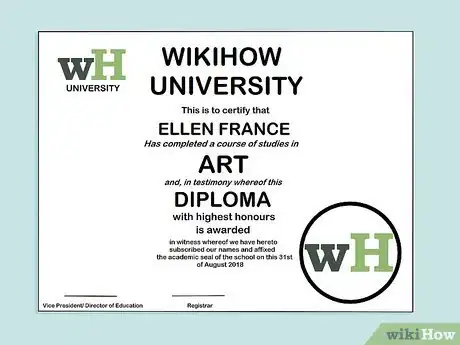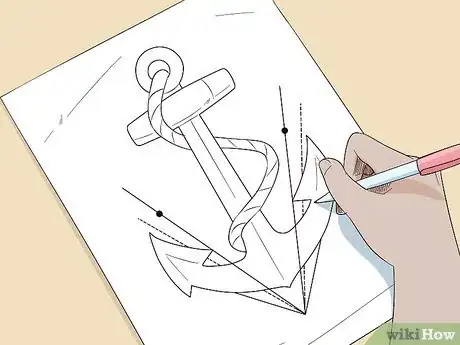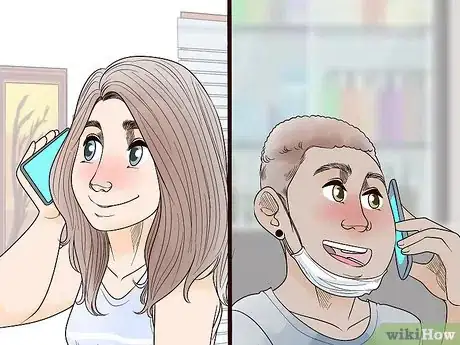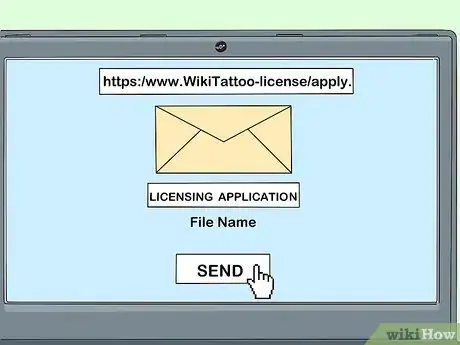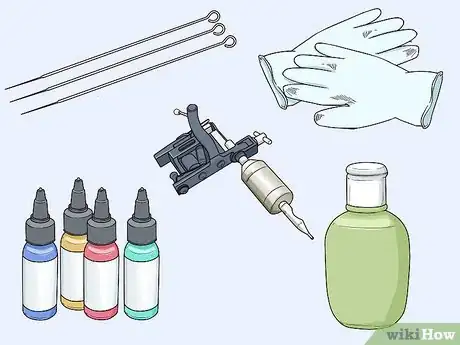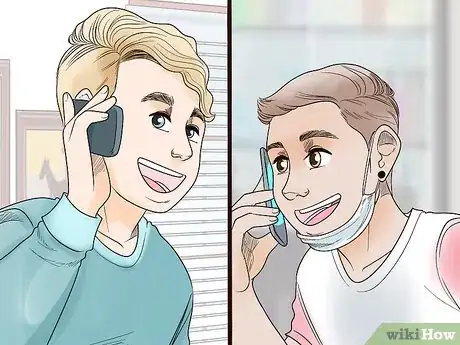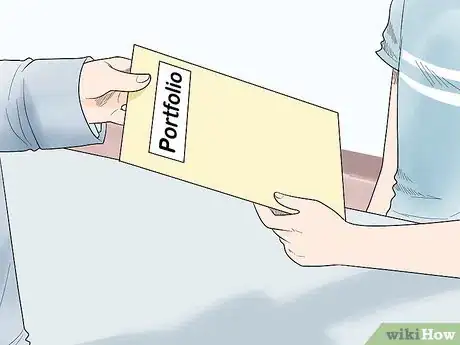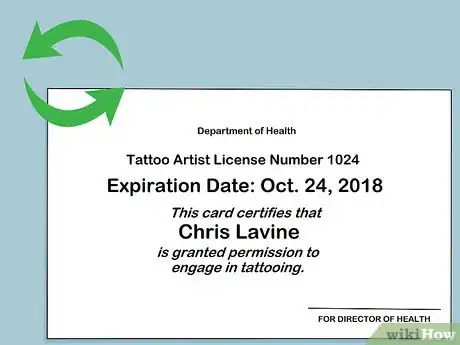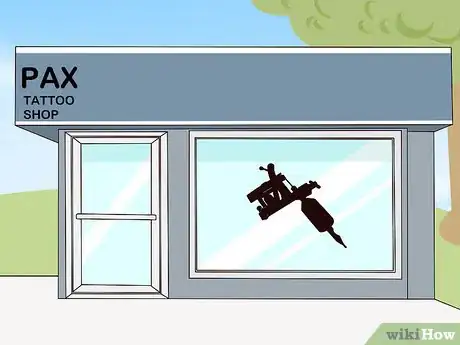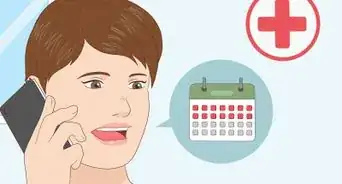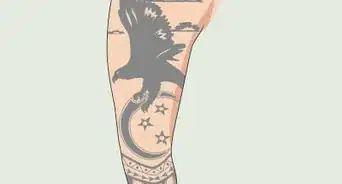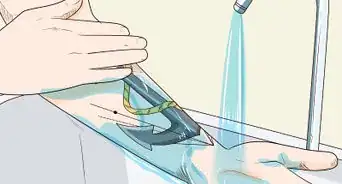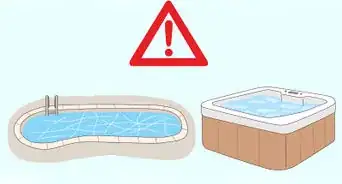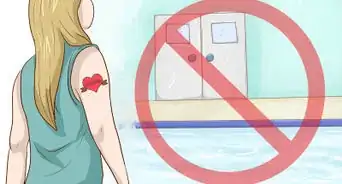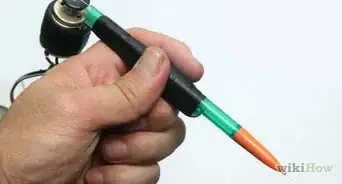This article was co-authored by Grant Lubbock. Grant Lubbock is a Tattoo Artist and Co-Owner of Red Baron Ink, a tattoo salon based in New York City. Grant has over 10 years of tattooing experience and he specializes in neo-traditional, black/grey, and color tattoos. Red Baron Ink's main goal is for each tattoo coming out of their studio to be one of a kind custom pieces that will look good throughout a lifetime.
There are 13 references cited in this article, which can be found at the bottom of the page.
wikiHow marks an article as reader-approved once it receives enough positive feedback. In this case, 85% of readers who voted found the article helpful, earning it our reader-approved status.
This article has been viewed 873,669 times.
Tattooing is an artistic skill that can help people feel better about their bodies and release your inner artistic passion. If you have drawing skills and a free spirit, tattoo artistry may be the perfect career for you. To become a tattoo artist, you will need to finish high school, complete a tattoo apprenticeship, and earn a tattoo license. With your tattoo license in hand, you're ready to apply for and secure a job as a tattoo artist.
Steps
Getting an Education and Improving Art Skills
-
1Finish your high school diploma. Most tattoo licenses require that the applicant graduates from high school and is at least 18 years old. Take a variety of art classes while you're in high school, from two-dimensional drawing to graphic design, to improve your versatility as an artist and prepare for your tattooing career.[1]
- If you can no longer attend high school and never graduated, get your GED instead.
-
2Earn a post-secondary art degree for better job opportunities. Although not required, some tattoo artists complete a degree in fine arts from an art school or university. Art degrees can improve your drawing skills and help you become a well-rounded artist, which may help you find more clients and better-paying jobs.[2]
- You can also take art classes from a community college as an alternative if you're not interested in getting a degree.
- Pair it with a business minor to prepare for working in a tattoo shop and gaining clients.
Advertisement -
3Take drawing classes to improve your artistic skill. Tattoo artists need to be skilled in drawing, particularly line art. Search for art classes offered by community centers, colleges, or people in your area and take a course from a teacher whose art style you admire.[3]
- You can also contact local tattoo artists to see if any of them offer art classes.
- If you're not as skilled in art when you begin, don't give up hope! Like all skills, art takes years of hard work and practice to perfect.
-
4Practice drawing on your own. Keep a sketchbook specifically for improving your art skills and draw in it during your free time. Draw anything from simple patterns to popular characters or celebrities to portraits, as the tattoos you draw as a professional may be varied in design.[4]
- Get several drawing books to help you learn new techniques and styles.[5]
- Draw potential tattoo designs in your sketchbook to develop your own personal style.
- Search for famous tattoo artists online and look to your favorites as inspiration. Popular tattoo artists include Mirko Sata, Chris Nunez, Miya Bailey, Gerhard Wiesbeck, Frank Carrilho, Rit Kit, and Stanisław Wilczynski.[6]
Getting Licensed
-
1Build your own art portfolio. Your art portfolio will help you secure an apprenticeship and job as a tattoo artist. Hold onto drawings that you're most proud of or that showcase your versatility and scan them digitally on your computer. Keep these drawings in a file on your computer so you can print or email them to potential clients or employers.[7]
- Include pieces in a variety of different mediums or styles to showcase your versatility as an artist.
-
2Finish an apprenticeship with an established tattoo artist. Contact local tattoo shops in your area and apply for an apprentice position. Once you've secured an apprenticeship, work with your supervisor to learn professional business skills, hygienic work practices, and tattoo design.[8]
- Many apprenticeships last between 6-12 months.
- In the beginning, you will likely be asked to do a lot of drawing. The artist will want to see if you can keep up the pace of the shop and create designs based on the customers' desires. This will help you develop your own style, as well.
- Your supervisor may also let you practice tattooing on yourself or, once you've gained enough experience, clients.
- Most tattoo apprenticeships last at least a year and are generally unpaid. You may need to work a side job until you complete your tattoo license.
-
3Complete the tattoo licensing requirements for your state or country. Licensing requirements may vary depending on your state or country. You may need to complete a certain amount of apprenticeship hours, take health and safety courses, pass an exam on hygienic tattooing practices, and pay a fee.[9]
- In most states or countries, you must secure a license before you can work as a tattoo artist. Contact your local government's business department to determine whether you need a license and, if so, what requirements you need to complete.[10]
- In states that don't require a license, you will likely need to complete a class on bloodborne pathogens, which can be taken online through the Red Cross.
-
4Submit your licensing application. Once you've completed all of the requirements, acquire a copy of the licensing application. Submit it along with copies of any required identification (like Social Security Cards or state-issued IDs) and wait at least 4-6 weeks for a decision.[11]
- You should be able to find the tattoo licensing application along with information about fees and the submission process on your local government's business department website. If you live in New York City, for example, you would visit https://www1.nyc.gov/nycbusiness/description/tattoo-license/apply.
- If your application is rejected, contact your state or country's business department. You may need to complete additional requirements before securing your license.
Finding a Job
-
1Buy tattooing equipment to start your tattooing career. Most tattoo shops require their employees to buy their own supplies. Purchase the following equipment online or from a tattooing specialty store to prepare yourself for a tattoo artist job:[12]
- Tattoo machine
- Needles
- Ink set and tubes
- Skin pens
- Hygienic supplies (gloves, alcohol wipes, antiseptic solutions, bandages, cling wrap, plastic cord covers, etc.)
-
2Look for postings online. Check classified sites like Craiglist to see if there are any positions available in your area. You can also check out tattoo forums and websites for specific tattoo shops to see if anyone is hiring.
-
3Call local tattoo shops about job openings. Search online or in newspapers for tattoo artist help wanted ads in your area. Many tattoo shops take artists on based on their skill or personal style, so contact local tattoo shops as well to find businesses looking for new artists.
- If you have any tattoo artist friends, ask if they know of any places that are hiring.
-
4Take your art portfolio to tattoo shops with job openings. Make a list of all tattoo shops that are hiring and ask them how to apply. In most cases, you will need to bring a physical copy of your resume and art portfolio to the shop.
- If you did tattoos on yourself or others during your apprenticeship, include pictures of them along with drawings and tattoo designs to stand out as an applicant.
-
5Prepare for and attend any job interviews. If you're offered a job interview, wear professional clothing and show up at least 10-15 minutes early. Answer any questions about your tattooing experience as clearly as possible and thank the interviewer afterward to make a good impression as an applicant.[13]
- Bring your ID, tattoo license, a copy of your resume, and your art portfolio to the interview.
- Search for common job interview questions for tattoo artists and practice them in your free time.
-
6Continue applying for tattoo artist jobs until you're offered a position. Don't worry if you aren't offered the first tattooing job you apply for. Securing your first job may take time, which is why you should apply to a variety of businesses.
- If you live in a small town, it may take time to find a tattoo artist opening. Move to a larger city for more job opportunities or start your own tattoo shop if your town doesn't have one.
Gaining Professional Experience
-
1Renew your tattoo artist license as needed. In most states or countries, you will need to renew your license every one or several years. Renew your tattoo license as needed once you've earned it to avoid fines.[14]
- Contact your state or county's department of business to find out how often you'll need to renew your license.
-
2Continue taking classes to improve your art skills. To hone your personal style and attract more clients, keep taking classes from your local recreation centers or community colleges. If you haven't already gotten an art degree, get one if you think it could perfect your drawing technique.
- Developing your own style is an important step to becoming a successful tattoo artist and distinguishing your work from other artists'.
- Depending on your location, your local government may also require you to take training classes every one or several years to maintain proper safety techniques.
- Keep up with news and techniques in the tattooing industry as well to maintain expertise on upcoming trends.[15]
-
3Network with other tattoo artists in your area. Getting to know other tattoo artists can help you stay updated on business trends and secure more clients through word of mouth. Visit nearby tattoo shops, attend tattoo artist conventions, and reach out to tattoo artists on social media to connect with others in the tattooing field.
- If you work in a tattoo shop, get to know your co-workers and their art portfolios. That way, you can refer each other to clients who want a specific tattoo style.
-
4Set up your own tattooing business once you have 3-5 years of experience. If you'd prefer job independence and higher pay per tattoo, you may want to start your own tattooing business. Advertise your work on social media and a personal website to gain new customers and build your client portfolio enough to make a living.[16]
- Setting up your own business is best after you have worked at least several years at a tattoo shop. That way, you can build your own client list and improve your marketability as a professional.
Expert Q&A
Did you know you can get expert answers for this article?
Unlock expert answers by supporting wikiHow
-
QuestionWhat kind of education do you need to be a tattoo artist?
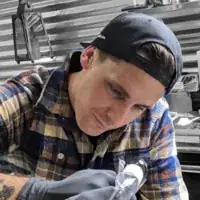 Grant LubbockGrant Lubbock is a Tattoo Artist and Co-Owner of Red Baron Ink, a tattoo salon based in New York City. Grant has over 10 years of tattooing experience and he specializes in neo-traditional, black/grey, and color tattoos. Red Baron Ink's main goal is for each tattoo coming out of their studio to be one of a kind custom pieces that will look good throughout a lifetime.
Grant LubbockGrant Lubbock is a Tattoo Artist and Co-Owner of Red Baron Ink, a tattoo salon based in New York City. Grant has over 10 years of tattooing experience and he specializes in neo-traditional, black/grey, and color tattoos. Red Baron Ink's main goal is for each tattoo coming out of their studio to be one of a kind custom pieces that will look good throughout a lifetime.
Tattoo Artist & Co-Owner, Red Baron Ink
-
QuestionWhat should I be looking for in a tattoo apprenticeship?
 Grant LubbockGrant Lubbock is a Tattoo Artist and Co-Owner of Red Baron Ink, a tattoo salon based in New York City. Grant has over 10 years of tattooing experience and he specializes in neo-traditional, black/grey, and color tattoos. Red Baron Ink's main goal is for each tattoo coming out of their studio to be one of a kind custom pieces that will look good throughout a lifetime.
Grant LubbockGrant Lubbock is a Tattoo Artist and Co-Owner of Red Baron Ink, a tattoo salon based in New York City. Grant has over 10 years of tattooing experience and he specializes in neo-traditional, black/grey, and color tattoos. Red Baron Ink's main goal is for each tattoo coming out of their studio to be one of a kind custom pieces that will look good throughout a lifetime.
Tattoo Artist & Co-Owner, Red Baron Ink Find an artist or a shop you admire, then go there and start collecting tattoos from them. At the same time, be presenting your portfolio with all of your designs. Be sure to show the technical side of what you're able to do on paper, from linework to full renderings and illustrations. Then, when they're looking for an apprentice, they may be more likely to choose you.
Find an artist or a shop you admire, then go there and start collecting tattoos from them. At the same time, be presenting your portfolio with all of your designs. Be sure to show the technical side of what you're able to do on paper, from linework to full renderings and illustrations. Then, when they're looking for an apprentice, they may be more likely to choose you. -
QuestionWhat are good methods for finding a full-time tattoo artist job?
 Grant LubbockGrant Lubbock is a Tattoo Artist and Co-Owner of Red Baron Ink, a tattoo salon based in New York City. Grant has over 10 years of tattooing experience and he specializes in neo-traditional, black/grey, and color tattoos. Red Baron Ink's main goal is for each tattoo coming out of their studio to be one of a kind custom pieces that will look good throughout a lifetime.
Grant LubbockGrant Lubbock is a Tattoo Artist and Co-Owner of Red Baron Ink, a tattoo salon based in New York City. Grant has over 10 years of tattooing experience and he specializes in neo-traditional, black/grey, and color tattoos. Red Baron Ink's main goal is for each tattoo coming out of their studio to be one of a kind custom pieces that will look good throughout a lifetime.
Tattoo Artist & Co-Owner, Red Baron Ink The process for finding a job is similar to finding an apprenticeship—you want to show them your portfolio so they can see what you can do. Since most tattoo shops are really busy, though, it's usually best to send your portfolio in an email. That way, they can look over it when they have time, and if they're interested, they can invite you in for an interview.
The process for finding a job is similar to finding an apprenticeship—you want to show them your portfolio so they can see what you can do. Since most tattoo shops are really busy, though, it's usually best to send your portfolio in an email. That way, they can look over it when they have time, and if they're interested, they can invite you in for an interview.
Warnings
- Remember: tattoos are permanent. Always exercise caution when giving somebody a tattoo, especially when beginning your apprenticeship or first tattoo artist job.⧼thumbs_response⧽
- Tattoo artists can work long hours, including nights and weekends, and can be physically demanding. If you're looking for a less strenuous job, you may prefer another career.[17]⧼thumbs_response⧽
References
- ↑ https://www.sokanu.com/careers/tattoo-artist/how-to-become/#education-how-to-become
- ↑ https://learn.org/articles/Learn_How_to_Tattoo_Your_School_and_Course_Questions_Answered.html
- ↑ https://www.liveabout.com/how-to-become-a-tattoo-artist-3189650
- ↑ https://www.cosmopolitan.com/career/a57826/things-i-wish-i-knew-tattoo-artist-career/
- ↑ https://conceptartempire.com/best-drawing-books-for-beginners/
- ↑ http://www.tattooaholic.com/hot-list-2017-best-tattoo-artists-world/
- ↑ https://www.liveabout.com/how-to-become-a-tattoo-artist-3189650
- ↑ https://www.liveabout.com/how-to-become-a-tattoo-artist-3189650
- ↑ https://www1.nyc.gov/nycbusiness/description/tattoo-license
- ↑ http://www.dol.wa.gov/business/tattoo/tattoolicense.html
- ↑ https://www1.nyc.gov/nycbusiness/description/tattoo-license/apply
- ↑ https://www.cosmopolitan.com/career/a57826/things-i-wish-i-knew-tattoo-artist-career/
- ↑ https://www.independent.co.uk/student/career-planning/getting-job/i-want-your-job-tattoo-artist-464450.html
- ↑ http://www.dol.wa.gov/business/tattoo/tattoorenew.html
- ↑ https://www.liveabout.com/how-to-become-a-tattoo-artist-3189650
- ↑ https://inkedway.com/how-to-become-a-tattoo-artist//
- ↑ https://www.sciencedaily.com/releases/2017/02/170216103833.htm
About This Article
To become a licensed tattoo artist, complete your high school diploma and be at least 18 years old. Once you've built an art portfolio, apply for an apprenticeship with an experienced, reputable tattoo artist, where you will learn the basics of tattooing as well as business and hygienic principles. After meeting your state or country's required apprenticeship hours, complete a tattoo artist license to become professionally certified and search for open jobs in your area. Keep reading to learn more about developing your career as a tattoo artist!

